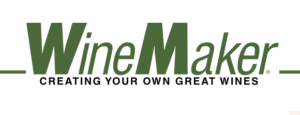Solving The Sulfite Puzzle (WineMaker)

When I first started making wine at home, I understood the role and importance of sulfite in preserving wine, but I never could get the same answer twice to my queries on how much sulfite I should add.
Sulfite additions seemed akin to witchcraft, rather than being based on established chemical principles.
To this day, many home winemakers are confused about sulfite or shun the practice on the grounds that sulfite is a harmful chemical. We still seem to be intimidated by the use of sulfite, in spite of its long history and use in winemaking.
Sulfite is the most effective and widely used preservative in winemaking. It safeguards musts and wines against premature oxidation and microbes that could otherwise spoil wine. It preserves the wine’s freshness and helps maintain its color, and is essential for aging wines. Another common use is in inhibiting wild yeasts to allow cultured wine yeasts to carry out the alcoholic fermentation.
Let’s try to demystify sulfite by reviewing some fundamental chemistry. This will help us understand how sulfite protects wine and how much “free SO2” we are introducing into our wine.
What Is Free SO2?
The most effective preservative and sanitizing agents used in winemaking are chemicals derived from elemental sulfur. Sulfur dioxide (SO2) gas, formed by burning sulfur has been used since the early days of winemaking to protect oak barrels from microbial spoilage. This practice is still widely used in winemaking to store empty barrels for an extended period of time.
SO2 gas can also be condensed to a colorless liquid to produce a sulfite solution with excellent antiseptic properties. These properties result from the dissipation of active SO2 to produce “free SO2,” and from some free SO2 combining with aldehyde compounds (responsible for oxidation in wines) to form “bound SO2” when sulfite is added to wine. Free SO2 is also found in musts from crushed grapes that have been sprayed in the vineyards with sulfur-based pesticides. It is also a byproduct of alcoholic fermentation, albeit in small concentration.
Two measurements widely used in commercial winemaking are free SO2 and total SO2 — the sum of free and bound SO2. Only free SO2provides antiseptic and oxidative protection to wines and is therefore the prime consideration for home winemakers. If you want to fully understand the chemistry of free SO2, you should read up on “molecular SO2.” Molecular SO2 is the active component of free SO2 and its effectiveness is dependent on a wine’s pH.
SO2 concentrations are expressed in mg/L (milligrams per liter). One mg/L is equivalent to 1 ppm (part per million).
* A percentage of WineMaker’s content is behind a paywall. If you are new to viticulture and/or winemaking, having a subscription for less than $50 annually is paramount. The resources WM provides are unparalleled, providing workshops, conferences, and online archival access to articles.
All geared to the hobbyist!


